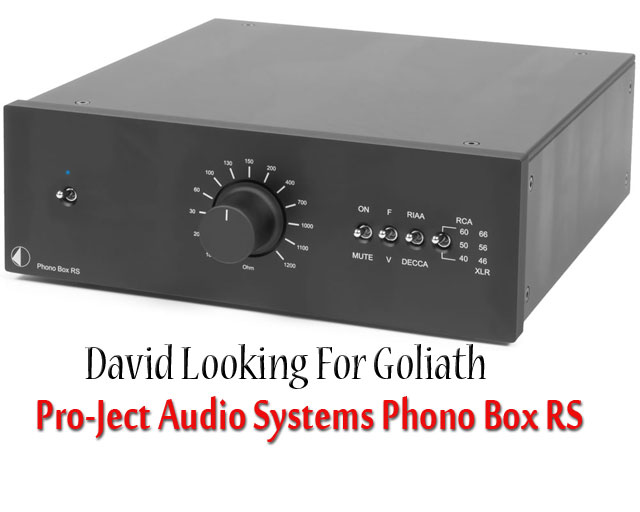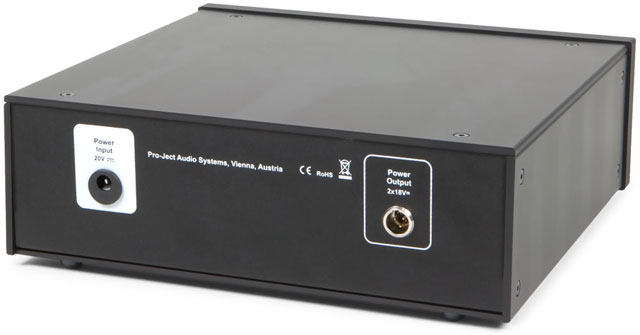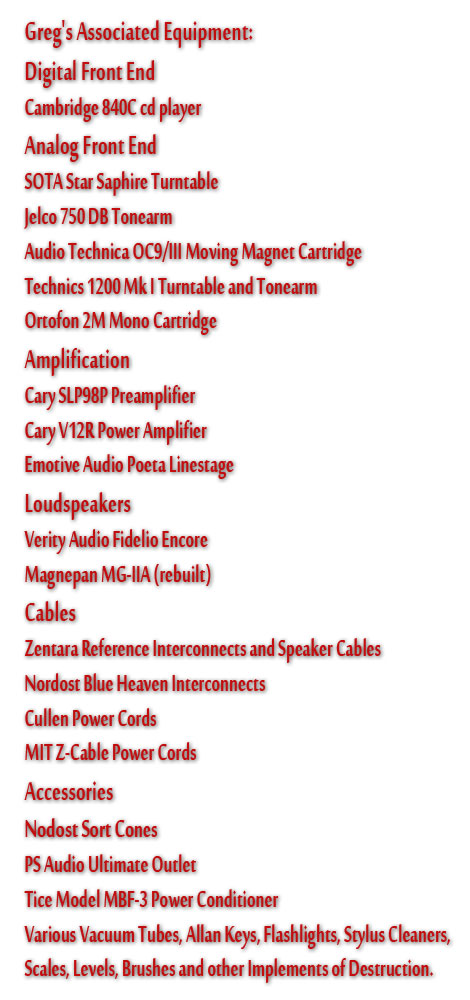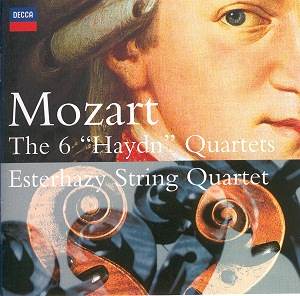Pro-Ject Audio Systems Phono Box RS

 The newest and top-of-the-line offering from Germany’s Pro-Ject Audio Systems aims at being a full function, infinitely adjustable, high-end moving magnet or moving coil phono pre-amplifier. If you can think of a way you’d like to adjust a p-stage to suit the requirements of your particular cartridge the Phono Box RS probably does it. It’s an ambitious effort from a company whose electronics have generally stayed in the cost-conscious end of analog playback, where they’ve done very well for themselves by offering limited, essential features on affordable gear that fights above its price point in almost any setting. The Phono Box RS phono stage and the accompanying Power Box RS Phono battery power supply take a significant step forward with a full feature set and correspondingly higher point of entry.
The newest and top-of-the-line offering from Germany’s Pro-Ject Audio Systems aims at being a full function, infinitely adjustable, high-end moving magnet or moving coil phono pre-amplifier. If you can think of a way you’d like to adjust a p-stage to suit the requirements of your particular cartridge the Phono Box RS probably does it. It’s an ambitious effort from a company whose electronics have generally stayed in the cost-conscious end of analog playback, where they’ve done very well for themselves by offering limited, essential features on affordable gear that fights above its price point in almost any setting. The Phono Box RS phono stage and the accompanying Power Box RS Phono battery power supply take a significant step forward with a full feature set and correspondingly higher point of entry.
 Pro-Ject has always been my kind of company: well-built, good sounding kit that doesn’t require a lifetime membership in the plutocracy to afford. It’s attainable gear for the average record spinner who wants an above average return on their investment. I’ve been using a humble Pro-Ject Tube Box phono preamplifier for the better part of a decade now and I’ve always been impressed with its level of sonic competence, especially for a unit that only cost about $350 when I purchased it. Functionally it’s very basic: you can select from on or off, MM or MC, and a subsonic filter, and that’s it. It’s still in the Pro-Ject lineup and I’d still recommend it as a good option for anyone who’s just getting started in vinyl or who wants a cost-effective way to add some tube magic to their system.
Pro-Ject has always been my kind of company: well-built, good sounding kit that doesn’t require a lifetime membership in the plutocracy to afford. It’s attainable gear for the average record spinner who wants an above average return on their investment. I’ve been using a humble Pro-Ject Tube Box phono preamplifier for the better part of a decade now and I’ve always been impressed with its level of sonic competence, especially for a unit that only cost about $350 when I purchased it. Functionally it’s very basic: you can select from on or off, MM or MC, and a subsonic filter, and that’s it. It’s still in the Pro-Ject lineup and I’d still recommend it as a good option for anyone who’s just getting started in vinyl or who wants a cost-effective way to add some tube magic to their system.
The Phono Box RS is a different animal altogether. For starters, contrary to the rest of Pro-Ject’s offerings where the tubed units are generally the premium version in each model line, the RS is solid state: no glass anywhere to be seen. The whole thing is nicely wrapped in aluminum casework that has a high-quality feel. It has only one set of single-ended inputs, but users can select between single-ended or balanced outputs. For moving coil cartridges it has infinitely adjustable loading options between 10 and 1200 ohms via a dial on the front panel; input impedance that’s selectable at 10 or 47 ohms; five capacitance options between 100 and 520 pF for moving magnet users; adjustable gain ranging from 40 to 60 dB (a little higher in balanced mode); there’s a subsonic filter switch on the back; and you can even switch between RIAA and Decca equalization curves.

Perhaps most notably, although the Phono Box RS can be run as a stand-alone unit powered by a wall wart, there’s also a separate available battery power supply to keep line noise to an absolute minimum. As they were designed to be used together, and the power supply is designed to maximize the performance of the p-stage, I’m electing to review them together. The price of the pair – the Phono Box RS and the accompanying Power Box RS Phono – is $1,750.00, significantly higher than anything else in the Pro-Ject lineup, but still quite reasonable given its extensive feature set.
Setup
 Hooking the thing up is relatively simple: connect the two boxes with the supplied umbilical cord, attach your source and monitoring components, plug it in and turn it on. If you’re really on the ball you’ll wait a few hours for the battery pack to fully charge, thus assuring that you’re listening to music without the interference of household current line noise. Flip the switch and watch the little blue LEDs come to life.
Hooking the thing up is relatively simple: connect the two boxes with the supplied umbilical cord, attach your source and monitoring components, plug it in and turn it on. If you’re really on the ball you’ll wait a few hours for the battery pack to fully charge, thus assuring that you’re listening to music without the interference of household current line noise. Flip the switch and watch the little blue LEDs come to life.
Setting it up to meet the needs of a given phono cartridge is a slightly more complicated affair. As noted, the Phono Box RS has a lot of adjustment options, and understanding how those functions interact with each other did require some attention to the user manual. I don’t claim to be an expert on setting up cartridge loading and the other variables, but I follow directions pretty well, so I relied on user manual throughout the review.
I also used two different cartridges for my tests: an Audio-Technica OC/9 III moving coil and an Ortofon 2M mono moving magnet. Using both types allowed me to assess the Phono Box RS’s function and performance with both MM and MC cartridge types.
Moving Coil Adjustment
Setting up a moving coil cartridge on the Phono Box RS is relatively straightforward. Start by making sure the dip switch for input impedance on the back is set for 10 Ohms. Then set the fixed/variable front panel rocker switch for input capacitance to ‘variable,’ and use the big knob on the front panel to adjust loading to where you want it. Audio Technica recommends a minimum of 100 ohms for the OC/9, but recent past experience with another phono stage determined that, at least to my ears, this cartridges sounds best in the 200 – 250 Ohm range. This also proved to be true with the Phono Box RS: lower than 200 pF and the treble rolled off; higher that 250 pF the treble became over-emphasized at the expense of the mids and bass.
Moving Magnet Adjustment
Setting up a moving magnet cartridge requires setting the aforementioned fixed/variable switch to fixed; setting the input capacitance to 47 ohms; and then diving into the DIP switches on the back panel. The entire Ortofon 2M line recommends using load capacitance between 150 and 300 pF. The Phono Box RS manual uses the Ortofon 2M Red – the base stereo model in the 2M lineup – as an example, specifying how to configure the phono stage for 200 pF, so that’s where I started. After a little trial and error, I decided that I preferred the sound with cartridge operating at the top of its specified range and left it set at 300pF, though the sonic difference was negligible. The cartridge change also required adjusting the gain down from 60 dBs to 40dBs.
How’s It Sound?
 The Phono Box RS had the unfortunate timing to immediately follow my recent review of the Lyric Audio PS10 phono stage. The Lyric costs three times as much as the Pro-Ject, so it might not be the fairest comparison, and the tradeoffs I’m going to describe might not have been as noteworthy if I hadn’t just reviewed the much more expensive unit. I’ll further preface this by saying up front that I’m in no way suggesting that these issues are necessarily deal breakers – the Pro-Ject Phono Box RS is a very good phono stage, particularly with moving coils – but it does have some peccadillos that need to be covered.
The Phono Box RS had the unfortunate timing to immediately follow my recent review of the Lyric Audio PS10 phono stage. The Lyric costs three times as much as the Pro-Ject, so it might not be the fairest comparison, and the tradeoffs I’m going to describe might not have been as noteworthy if I hadn’t just reviewed the much more expensive unit. I’ll further preface this by saying up front that I’m in no way suggesting that these issues are necessarily deal breakers – the Pro-Ject Phono Box RS is a very good phono stage, particularly with moving coils – but it does have some peccadillos that need to be covered.
To get right to the point, using my Audio Technica OC/9 moving coil the Phono Box RS sounds really good: not perfect, but really, really good. Very few components, especially at this price point, can be all things to all audiophiles and the Phono Box RS is no exception. It does some things brilliantly, and if those happen to be the qualities you’re looking for this may well be a good choice for you. But it’s doesn’t do everything with equal aplomb. There are some tradeoffs.
It’s an old, well-beaten cliché to say that music lives in the midrange, but there is some truth to that tired old trope, and the midrange is clearly where Pro-Ject placed their emphasis in designing the Phono Box RS. With my moving coil the mids were, in a word, gorgeous. All the over-used hi-fi adjectives apply here: liquid, grainless, smooth (really smoooooooth), as well as reasonably warm and immediate. The RS is also very quiet, though not quite as black as the CD input on my preamp. In many ways, the Phono Box RS is very tube-like in its presentation, although with twenty-four glass bottles downstream it’s hard to imagine that anything would ever make my system sound dry
As truly fine sounding as the mids are with my moving coil, the Phono Box RS exacted tradeoffs in two other areas: extension, particularly in the extreme edges of treble, and in dynamics. The treble notes are all there but it didn’t deliver the air that you can get from more expensive units. It’s the difference between hearing music and hearing music in audible space. Audiophiles thrive on that kind of minutia but that may or may not be important to you. The dynamics – the ability to move air and recreate realistic slam and impact – are also somewhat truncated. Like the treble, the bass itself is well extended – the notes are all there – and that bass has great clarity and realistic texture, but it too lacks that last component of physicality. Bass drums – hell, even a good snare drum thwack – don’t have the physical impact the way I know they should on certain recordings. There’s an overall softening.
I’m going to direct my stern gaze at the battery power supply here. Rechargeable or not, Battery powered phono stages have sometimes been accused of softening impacts – Stereophile’s otherwise stellar 2005 review of the D-cell powered Southerland PhD comes to mind – and that seems to be the case here. In the words of the immortal Federation Captain James T. Kirk, “Must…have…more…power…”
So, for the record, if your taste in music leans towards Motörhead or Black Sabbath, this is probably not the right piece of equipment for you. You’ll want something with more grunt for all of your head-banging needs. (Btw, I don’t always listen to rock and roll, but when I do I listen to Motörhead and Black Sabbath, a habit initially acquired because it annoyed my mother to no end when I was in high school.)
Nevertheless, with a good moving coil and the right recordings, the Phono Box RS can sound truly amazing. Strings, small combo jazz, pianos, choirs, any acoustic instrumentals where melody is the core of the message, are all reproduced with highly resolved detail, warmth and a realistic presentation. You just shouldn’t expect to have your pant legs flapping from bass energy.
Cue the Music – Moving Coil
I really can’t stand strident, harsh, hard-sounding violins. It’s the aural equivalent of dragging nails across a chalkboard and it’s the fastest way to get a record taken out of rotation in my house. Fortunately, this was not an issue with the Phono Box RS. With its silken presentation, the RS really excelled at delivering strings without the nasties, with sleek treble notes all the way up and no bad manners.
 One of my favorite classical recordings is a three-album box of the Esterhazy String Quartet playing W.A. Mozart: The Haydn Quartets (L’Oiseau-Lyre, Dutch DECCA pressing, 1982). Played through the RS it’s a simply gorgeous recorded experience. The record throws a big near-perspective soundstage and the resonant details of all four instruments are abundant. The cello has that rich string-over-wood vibrato; the viola is distinct and clearly delineated, also with appropriate wooden tonal character; and the violins are, as previously mentioned, so smooth, without a trace of electronic artifact, that I was simply left alone with the music. It was one of those moments when – although I’m always aware that I’m listening to a recording – I was able to completely ignore that reality and thoroughly enjoy the music. I wound up listening to both sides of all three records back to back and loved every minute of it. I don’t listen to a ton of classical music – I’m a jazz guy, mostly – but I do enjoy it and this recording played back through the RS made a really good case for why I should listen to more of it. Even the RS’s shortfall of lacking air was rendered irrelevant. The sonics and performance were so compelling that fussing over the sound of the room just seemed superfluous. If small ensemble classical recordings are your bag, you might be very happy listening to the Phono Box RS for a very long time.
One of my favorite classical recordings is a three-album box of the Esterhazy String Quartet playing W.A. Mozart: The Haydn Quartets (L’Oiseau-Lyre, Dutch DECCA pressing, 1982). Played through the RS it’s a simply gorgeous recorded experience. The record throws a big near-perspective soundstage and the resonant details of all four instruments are abundant. The cello has that rich string-over-wood vibrato; the viola is distinct and clearly delineated, also with appropriate wooden tonal character; and the violins are, as previously mentioned, so smooth, without a trace of electronic artifact, that I was simply left alone with the music. It was one of those moments when – although I’m always aware that I’m listening to a recording – I was able to completely ignore that reality and thoroughly enjoy the music. I wound up listening to both sides of all three records back to back and loved every minute of it. I don’t listen to a ton of classical music – I’m a jazz guy, mostly – but I do enjoy it and this recording played back through the RS made a really good case for why I should listen to more of it. Even the RS’s shortfall of lacking air was rendered irrelevant. The sonics and performance were so compelling that fussing over the sound of the room just seemed superfluous. If small ensemble classical recordings are your bag, you might be very happy listening to the Phono Box RS for a very long time.
 Going back to the jazz records that make up the majority of my listening, the John Ballantyne Trio’s, Sky Dance is a terrific 1988 recording from the Canadian label Justin Time Records. Recorded in Montreal, this first-rate recording features the immortal Joe Henderson on tenor saxophone. The performance is outstanding by any measure and the production values are about as good as anything else in my collection. This record throws a big, tall stereo image with instruments clearly delineated and naturally arranged. There’s none of the RVG hard left/right panning here. This is a band recorded in a single space.
Going back to the jazz records that make up the majority of my listening, the John Ballantyne Trio’s, Sky Dance is a terrific 1988 recording from the Canadian label Justin Time Records. Recorded in Montreal, this first-rate recording features the immortal Joe Henderson on tenor saxophone. The performance is outstanding by any measure and the production values are about as good as anything else in my collection. This record throws a big, tall stereo image with instruments clearly delineated and naturally arranged. There’s none of the RVG hard left/right panning here. This is a band recorded in a single space.
Plucked bass comes through in what broadcasters used to describe as “deep rich pear-shaped tones,” rounded and palpable, though with a little less punch than I would have liked. The highest piano notes, the lightest cymbal taps, and the brushes are all there, reproduced with full extension, but there is little sense of the room around those instruments. Again, this may or may not be an issue for you, but since I know this effect is in the recording I was also aware that the RS is not reproducing this last iota of information. The mids, especially Henderson’s tenor, are fully fleshed out and natural sounding. On the warhorse “You, The Night and The Music” his fingers tear up and down his horn with urgency. He was really on fire for this session and the recording capture is brilliant (If only State of the Tenor had been recorded this well). Ballantyne’s piano has weight as he pounds large chords with his left hand, and twinkling filigree when he runs with his right.
But this is a very dynamic recording, with hard drum thwacks and loud cymbal crashes throughout, and while it sounded really good with the Phono-Box RS, it also sounded a tad polite and a bit softer than I’ve come to expect out of this record. Those drum cracks moved a little air, but they didn’t have the so-called ‘jump factor.’ It sounded good, even excellent in many ways, but it also bore a few minor sins of omission, consistent with what shaped up to be the Phono Box RS’s essential character.
Cue More Music – Moving Magnets
For this review, instead of using two separate tables as I usually do, I decided to swap head shells and run the Ortofon 2M Mono in my SOTA, mostly to make sure that I’d eliminated as many external variables as possible. Also, before I get into this, please keep in mind that the 2M Mono is an inexpensive MM cartridge. I was not expecting it to suddenly transform into a hyper detailed moving coil, and it did not. It’s a good monaural cartridge but it does not and never will deliver the kind of resolution that can be had from a good moving coil.
 Throwing on an original mono copy of Art Pepper Meets the Rhythm Section (Contemporary 1957) quickly revealed that the Phono Box RS’s moving magnet section more or less mirrored the same essential qualities that I’d heard with the AT OC/9 III moving coil, though with some notable differences. In the mids the RS helped 2M Mono deliver as much resolution as the cartridge is capable of – within its limitations – and the delivery retained much of the silken liquidity evident with the OC/9. The bass, if just by a hair, may have had a little more punch than the moving coil, but more low tone than wooden texture, likely an effect of the cartridge not the phono stage. Treble though, was audibly more recessed. I listened to records from Blue Note, Prestige, Pacific and Contemporary, all original mono pressings by three different engineers (Blue Note and Prestige are both Van Gelders), and the effect of Phono Box RS on each of them was consistent, particularly in the treble.
Throwing on an original mono copy of Art Pepper Meets the Rhythm Section (Contemporary 1957) quickly revealed that the Phono Box RS’s moving magnet section more or less mirrored the same essential qualities that I’d heard with the AT OC/9 III moving coil, though with some notable differences. In the mids the RS helped 2M Mono deliver as much resolution as the cartridge is capable of – within its limitations – and the delivery retained much of the silken liquidity evident with the OC/9. The bass, if just by a hair, may have had a little more punch than the moving coil, but more low tone than wooden texture, likely an effect of the cartridge not the phono stage. Treble though, was audibly more recessed. I listened to records from Blue Note, Prestige, Pacific and Contemporary, all original mono pressings by three different engineers (Blue Note and Prestige are both Van Gelders), and the effect of Phono Box RS on each of them was consistent, particularly in the treble.
In general, the moving magnet sounded smaller and less decisive. It didn’t sound bad, per se, but it seemed as though the tradeoff effects that I’ve already noted with MC playback were exacerbated in MM mode with the addition of a smaller image, which was not a welcome turn. I was expecting Phono Box RS to deliver relative parity between the two cartridge types and that proved not to be the case in my system.
This drove me crazy and I set out understand how much of the moving magnet diminishment was due to the Phono Box RS and how much was due to the Ortofon 2M Mono, or for that matter whether the turntable itself was playing a role. So for a comparison I plugged the turntable into the excellent MM phono stage in my Cary SLP-98P preamp. Regrettably I had to conclude that the RS’s effects were not caused by the cartridge or table. Once the 2M Mono was running through the Cary the treble opened up instantly, mids were much more detailed, and the bass became more dynamic if still more tonal than textured. The entire presentation became larger and more coherent. The 2M Mono is capable of higher performance than the Phono Box RS was transmitting and the Cary phono stage put that into high relief.
Still not convinced that I hadn’t overlooked something, I switched the cables back to the Phono Box RS and began to fiddle with it some more: 47 ohms, check; 300 pF capacitance, check; change it to 200 pF capacitance for comparison, check; gain at 40dB, check; I re-checked the dip switches and made sure I had the fixed/variable switch in the proper positions, all check. Then I tried the two other adjustments on the front panel: gain and equalization curve. Increasing the gain to 50 dBs increased the volume, but didn’t really change the sound, and it also introduced hum, so that clearly wasn’t a good work around. Switching the EQ curve to Decca from RIAA – which admittedly was a long shot, but you never know – made the bass thick and lumpy at the expense of the rest of the frequency curve. That wasn’t helpful either.
I’d like to think I was doing something wrong here, some overlooked setup step or other user error, but I don’t believe that’s the case. If anyone at Pro-Ject has any thoughts or suggestions I’d love to hear them, and I’d be happy to update this review if someone can point out the user error. The way it stands right now, I was disappointed with the moving magnet section of the Phono Box RS. As ambitious and feature-laden as this phono stage is, its performance with a basic moving magnet cartridge should have sounded better.
Conclusion
As I said earlier, very few components at this price point can be all things to all people. To get a phono stage – or any component really – that truly delivers everything you could want with every type of cartridge or music you’re going to have to spend a hell of a lot more than $1,750. On the other hand, for $1,750 the Phono Box RS and accompanying Power Box RS Phono did exhibit some really fine qualities with a moving coil cartridge in my system, and they did so in Pro-Ject’s best tradition of offering great value that competes well above its price point.
The Metropolitan Transit Authority is never going to complain that your thundering bass is disrupting the Zen calm of their subway line, but with a MC cartridge all the notes were there, well rendered and nicely textured. So, I’m going to give the Pro-Ject Phono Box RS a qualified recommendation. As you’ve already read, this phono stage does some things exceptionally well. Its moving coil performance had a satiny smooth finish that was ravishing with strings and it drew tons of detail out of good recordings, though with some softness in the bass and limitations at the extreme top end of the treble.
I was really rooting for Pro-Ject to score a David vs. Goliath victory with this phono stage. I’m genuinely disappointed to report that my moving magnet experience with the Phono Box RS was not what I was hoping it would be, especially after a qualified but ultimately positive experience using a moving coil. I don’t understand why there should have been such a significant gap between MM and MC cartridge performance, but that’s what happened in my system. I’m still not 100% convinced that the moving magnet performance didn’t have some other contributing factor, but if that’s the case I’ve not been able to identify the issue.
Nevertheless, I would still recommend giving the Pro-Ject Phono Box RS a listen, but definitely make sure you hear it with your own equipment because the variations in performance with different ancillary equipment were far greater with this p-stage than any other component I’ve ever had in my system. If you’ve got the right combination of gear and music it might work really well.
I really like Pro-Ject as a company. I really appreciate their high-value niche in the marketplace and I’ve admired and used one of their phono stages for a long time. To my knowledge, the Phono Box RS and Power Box RS Phono combination is the most feature-laden phono preamplifier Pro-Ject has even brought to market, and I applaud their ambition. It’s a genuine leap in features and user flexibility for the company.
I came into this review with high expectations for what Pro-Ject might have achieved with this level of functionality, and in some ways the Phono Box RS met those expectations. I just wish the results had been a little more consistent across the board.
Post-Script
I just couldn’t leave this one alone. After re-setting up my SOTA with the OC/9 III moving coil I did a little further listening and with the moving coil it really does sound terrific. Listening to the posthumous Lee Morgan double record, simply titled Lee Morgan, The Last Session (Blue Note, 1972) reconfirmed all of my prior observations about the Phono Box RS’s high resolution, liquidity and general refinement. Taken on its own terms and with careful system matching it really can sound fantastic.


greg simmons
Specifications:
Pro-Ject Phono Box RS Price: $999.00, optional Battery Power Box $799.00
Input impedance: Fixed 10 ohms or 47kohms, variable 10 – 1200 ohms
Load capacity switchable: 100pF 200pF, 300pF, 420pF, 520pF
Output impedance: 50 Ohms
Gain, MM / MCRCA: 40, 50, 60 dB
XLR: 46, 56, 66 dB
Signal to noise ratio: 80dB (91dB – IEC -A)
THD: < 0,019%
RIAA accuracy within 0,3dB/20Hz – 20kHz
Subsonic: 20Hz / – 12dB
Input: RCA & XLR
Output: RCA & XLR
Power supply: +2x 18V/300mA DC; 220 – 240V, 50Hz
Power consumption: 150mA DC < 1 watt standby
dimensions: W x H x D (T with sockets)206 x 72 x 200 (210)mm
weight: 2000g without power supply
Address:
Pro-Ject Audio Systems
a Division of Audio Tuning Vertriebs GmbH
Margaretenstrasse 98
A-1050 Wien
AUSTRIA
E- Mail: info@project-audio.com
Website: http://www.project-audio.com
Stereo Times Masthead
Publisher/Founder
Clement Perry
Editor
Dave Thomas
Senior Editors
Frank Alles, Mike Girardi, Russell Lichter, Terry London, Moreno Mitchell, Paul Szabady, Bill Wells, Mike Wright, and Stephen Yan,
Current Contributors
David Abramson, Tim Barrall, Dave Allison, Ron Cook, Lewis Dardick, John Hoffman, Dan Secula, Don Shaulis, Greg Simmons, Eric Teh, Greg Voth, Richard Willie, Ed Van Winkle, Rob Dockery, Richard Doron, and Daveed Turek
Site Management Clement Perry
Ad Designer: Martin Perry






Be the first to comment on: Pro-Ject Audio Systems Phono Box RS